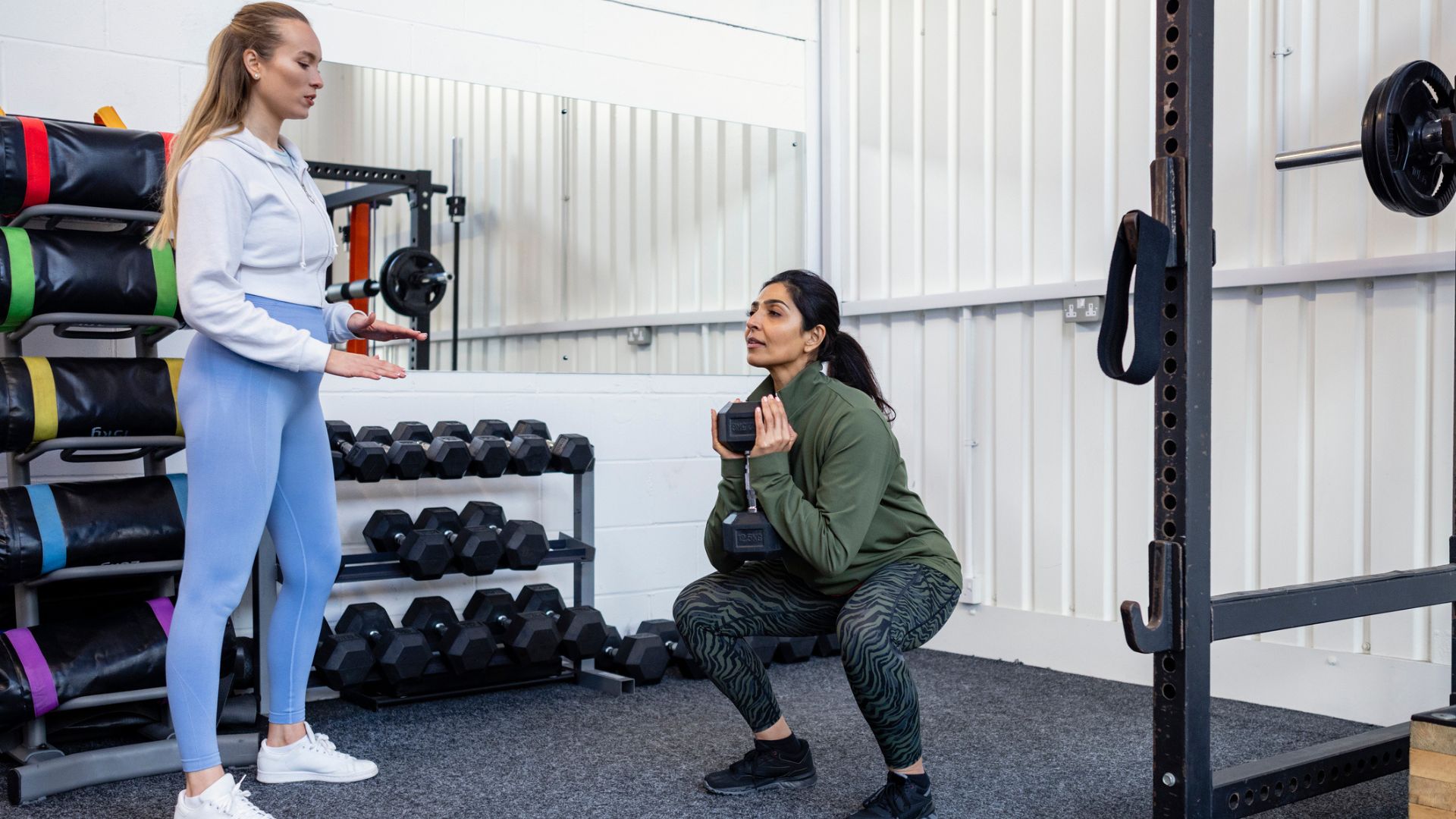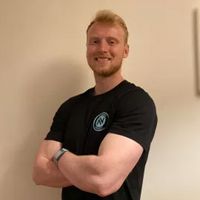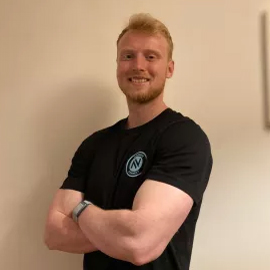These six moves are all you need to build muscle all over
Learn six muscle-building moves (and why they're so effective) with this trainer's full-body dumbbell routine


Walking into the gym for the first time can be a daunting experience, with all sorts of confusing machines and free weights scattered about the place. That's why we recommend going in with a clear, effective exercise plan — a sure-fire way to build both strength and confidence.
This beginner-friendly workout from certified strength and conditioning specialist Katie Crewe is the perfect place to start. Not only does the Canadian trainer introduce you to six muscle-building moves, but she also explains how to perform each one and which muscles it will work.
Most of the exercises can be done with just a pair of dumbbells too, so you can practice this session at home before hitting the gym. The best adjustable dumbbells are great for gym-free workouts as you can change their weight to suit your strength level, but a fixed set will also work.
Crewe recommends warming up for each exercise with a light set of 5-10 repetitions. Once you feel comfortable with the technique, perform each one for three sets of eight to 12 repetitions, leaving 60-90 seconds between sets.
For the best results, use a weight that is light enough to maintain good form, but still feels challenging to lift for the final two or three repetitions. Watch Crewe's videos below for an introduction to each of the six exercises, as well as form tips and information on their benefits.
Watch Katie Crewe's full-body workout
A post shared by Katie Crewe (@katiecrewe)
A photo posted by on
If you want to try this workout at home before taking it to the gym, try using our simple substitutions to make it more accessible.
Switch the dumbbell chest press for a dumbbell floor press (where you lie on the ground instead of a weight bench), perform the step-ups using a secure step or stool, and swap the cable rows for dumbbell bent-over dumbbell rows.
Start your week with achievable workout ideas, health tips and wellbeing advice in your inbox.
This resistance training workout may feel different to high-intensity resistance training (HIRT) or HIIT workouts for fat loss you've tried in the past.
That's because these exercise styles focus on boosting your cardio and burning energy, whereas resistance (or weight) training workouts like Crewe's aim to build strength and muscle.
As a result, resistance training workouts have longer rest times built in, giving your muscles time to recover slightly between sets. This way, you can hit each one with renewed intensity without having to lighten the load you're lifting.
This can help you use the strength-boosting progressive overload principle, which (in a resistance training setting) simply means lifting weights you find challenging to tell the body it needs to grow stronger.
Crewe's six-move session hits every major muscle group and is likely to feel quite taxing for beginners, so if you want to add it into your weekly workout plans we recommend using it as a standalone session for the day.
You should also give your muscles enough time to recover and grow afterwards, so try resting or doing a lower-intensity activity the next day. A session from our running plan for beginners or a few flows using these eight anti-aging yoga moves should fit the bill nicely.

Harry Bullmore is a Fitness Writer for Fit&Well and its sister site Coach, covering accessible home workouts, strength training session, and yoga routines. He joined the team from Hearst, where he reviewed products for Men's Health, Women's Health, and Runner's World. He is passionate about the physical and mental benefits of exercise, and splits his time between weightlifting, CrossFit, and gymnastics, which he does to build strength, boost his wellbeing, and have fun.
Harry is a NCTJ-qualified journalist, and has written for Vice, Learning Disability Today, and The Argus, where he was a crime, politics, and sports reporter for several UK regional and national newspapers.